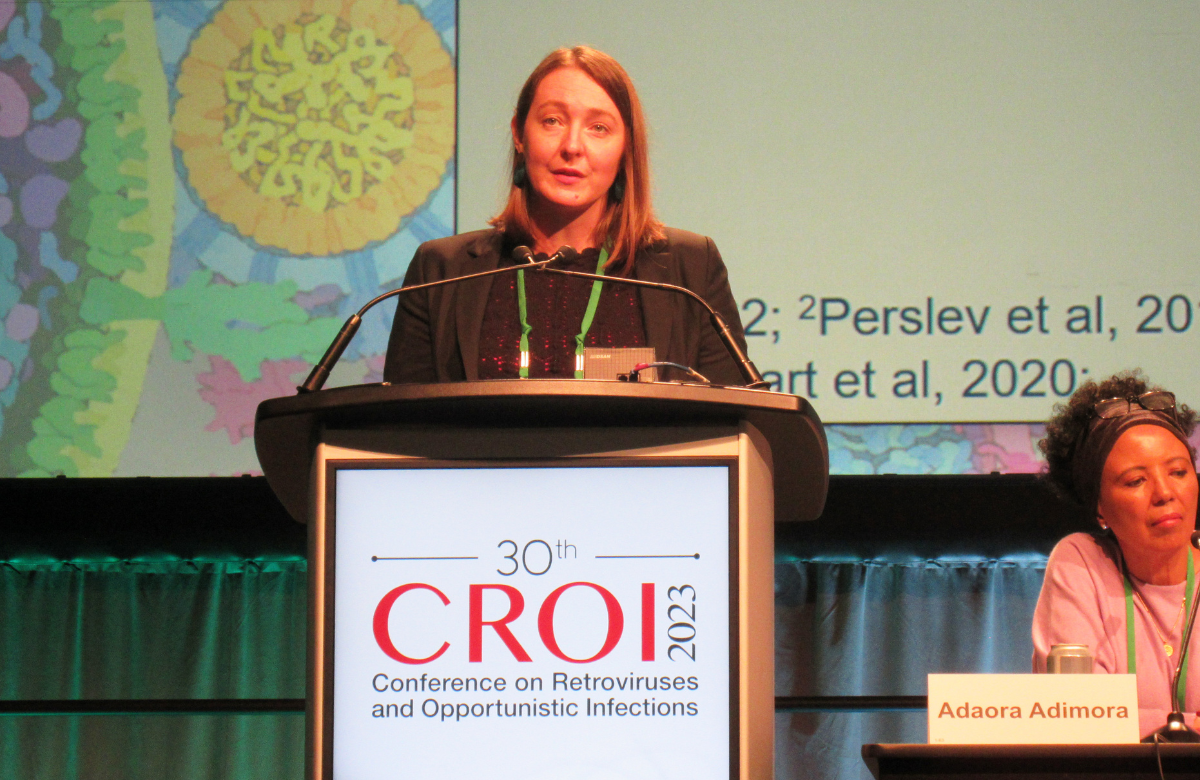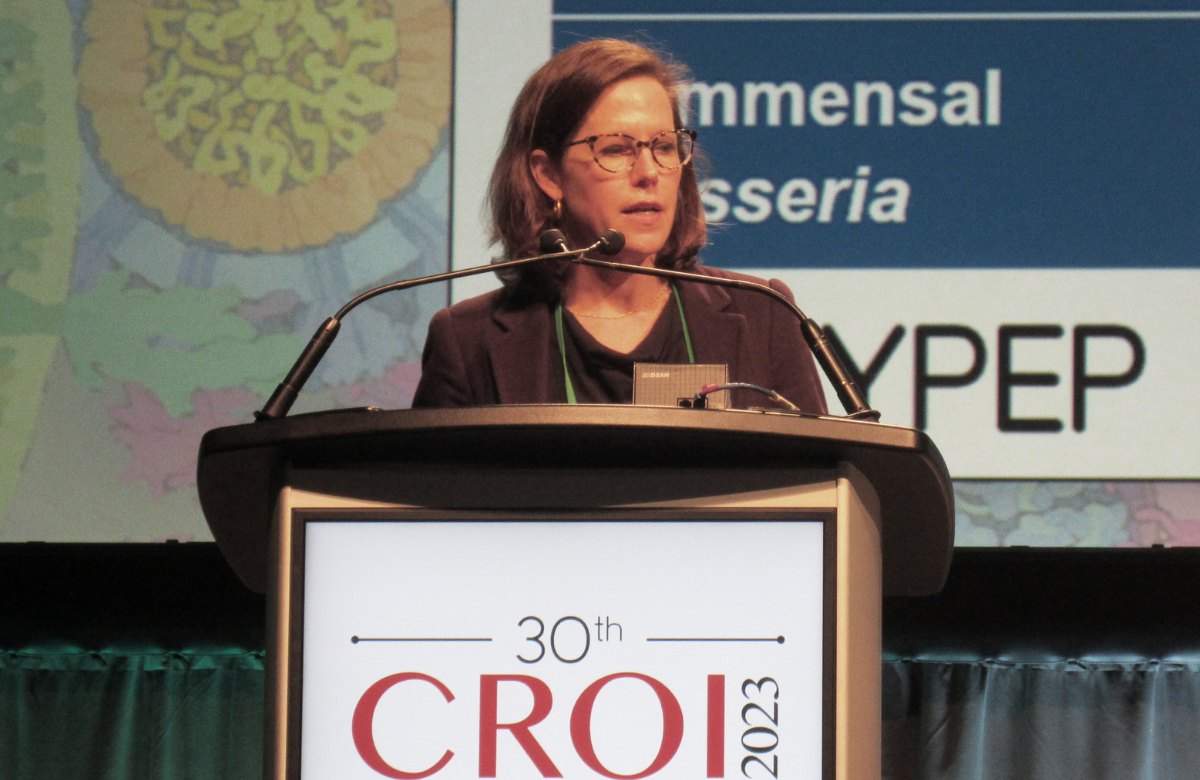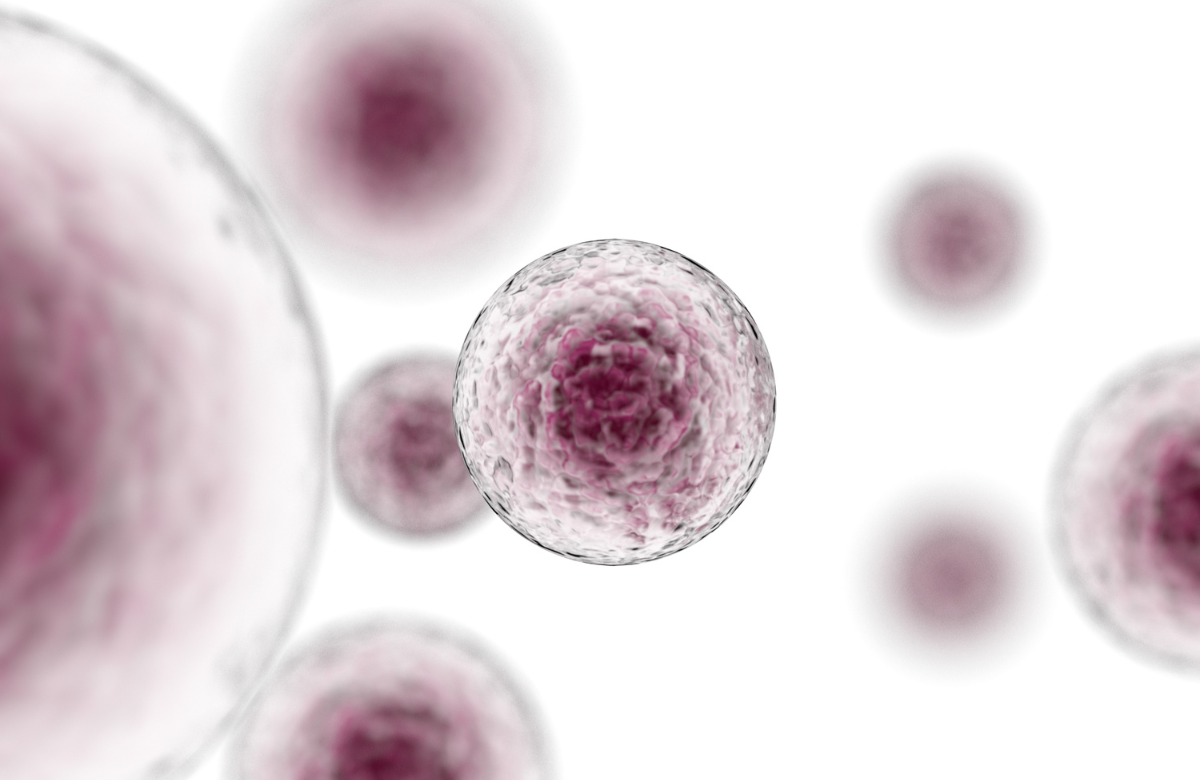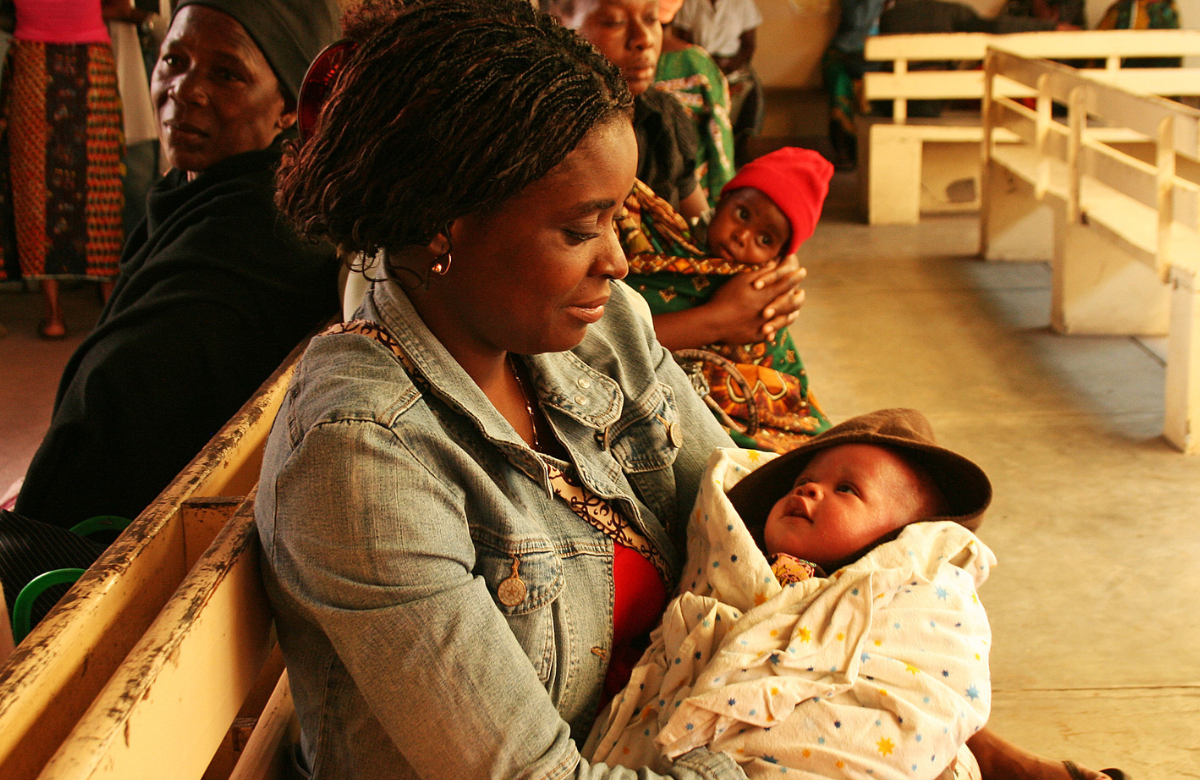Vaccine and doxycycline PEP both cut gonorrhoea rates

The results were presented at the 30th Conference on Retroviruses and Opportunistic Infections (CROI 2023) taking place this week in Seattle, US.
The study also investigated the effectiveness of taking the antibiotic doxycycline as post-exposure prophylaxis (‘doxyPEP’) against bacterial sexually transmitted infections (STIs). It cut the rates of chlamydia and syphilis by 88% and 87%. The antibiotic also “unexpectedly” cut the rate of gonorrhoea by 51%, independently of the effect of the vaccine.
The study used the meningitis B vaccine 4CMenB (Bexsero), which was known to have modest efficacy against gonorrhoea. Participants were randomised to receive the vaccine only, doxycycline only, both interventions or neither. All participants were also taking HIV PrEP (regular medication to prevent HIV infection).
Of the 502 people whose data were available for analysis, 332 received doxyPEP and 170 did not; 257 received the vaccine, while 245 did not. They were all cisgender gay and bisexual men. Participants had an average age of 39, 80% were White and 85% born in France.
There were very high baseline rates of STIs, defined as infections diagnosed in the last year: 68% had had gonorrhoea, 50% chlamydia and 20% syphilis. Their average number of partners in the last three months was 10, with an average of five occasions of condomless sex in the last month. Eleven per cent had used chemsex drugs the last time they had sex.
The study was stopped early, when analysis of the data showed the results were already conclusive.
In the doxyPEP analysis, after a year, there were 36 syphilis and/or chlamydia infections in participants not receiving PEP and 13 in men who did receive it. However, because there were twice as many men taking PEP as not taking it, and because some acquired multiple infections, these figures understate the true difference.
PEP had 79% efficacy against syphilis and 89% efficacy against chlamydia. It had more modest (51%) efficacy against gonorrhoea.
There was some evidence that gonorrhoea acquired drug resistance, but this low-level resistance did not stop the doxycycline working, and there was no high-level resistance.
Turning to the vaccine analysis, there were 49 first-time gonorrhoea infections, 32 in men not given the vaccine, versus 17 in men given it. This equated to 19.7% annual incidence without the vaccine, and 9.8% with it – coincidentally, exactly the same 51% efficacy as doxyPEP.
“This is the first vaccine that shows some level of efficacy against a bacterial sexually transmitted infection,” principal investigator Professor Jean-Michel Molina of the University of Paris told aidsmap. However, he does not expect to see guidelines endorsing vaccination after one study, particularly as the vaccine used is expensive. Molina said, “We need to find out what its duration of protection is, and whether and when you might need a booster.”
Doxycycline PEP appears ineffective for cisgender women

DoxyPEP involves taking a 200mg dose of the antibiotic doxycycline within 72 hours after condomless sex. In addition to the DOXYVAC study reported above, a study reported last summer, that enrolled men who have sex with men and transgender women in the US, showed that doxycycline reduced new cases of bacterial STIs – chlamydia, gonorrhoea and syphilis – by more than 60% per quarter.
However, until now doxyPEP had not been tested with cisgender women. The dPEP Kenya trial evaluated it with young women in Kisumu, an area with high STI rates and a high prevalence of antibiotic-resistant gonorrhoea.
The trial, conducted from 2020 to 2022, enrolled 449 cisgender women aged 18 to 30 who were taking HIV PrEP and were not pregnant. They were randomly assigned to take doxycycline after sex or receive standard care (quarterly STI testing and treatment after diagnosis). Each week, the women received text messages asking about the frequency of sex and doxycycline use, and they were tested for STIs quarterly.
About 60% of the women were using hormonal contraception and 37% reported transactional sex. At baseline, 18% had a bacterial STI: about 14% chlamydia, about 4% gonorrhoea and less than 1% syphilis.
STI rates were high during the study. The annual incidence was 27%, comparable to rates among men who have sex with men in high-income countries. But doxycycline did not significantly reduce the risk of STIs. There were 50 new cases of STIs in the doxycycline group and 59 cases in the standard-care group, but this difference did not reach statistical significance.
Possible explanations for the “stark contrast” between the results from last summer’s study and this one include anatomical differences, variations in antibiotic resistance in the areas where the studies were conducted and suboptimal adherence, according to presenter Dr Jenell Stewart of the Hennepin Healthcare Research Institute in Minneapolis. While there have been no reported cases of antibiotic-resistant chlamydia worldwide, doxycycline-resistant gonorrhoea was very common in this study.
Stewart noted that endocervical tissue may differ from urethral, rectal and throat tissue in terms of drug levels. However, another study presented at the same session suggests this is not an adequate explanation.
Dr Richard Haaland of the US Centers for Disease Control and Prevention (CDC) performed a pharmacokinetic analysis, measuring doxycycline concentrations in men and women at sites of STI exposure. Participants provided blood samples and mucosal swabs up to seven days after receiving a 200mg dose of oral doxycycline.
Doxycycline concentrations peaked sooner in vaginal compared with rectal secretions, but there were no differences in blood levels between men and women. Doxycycline concentrations in rectal, vaginal and cervical tissue stayed well above the minimum levels need to inhibit chlamydia and syphilis for three to four days, but for just two days for gonorrhoea.
Limited gonorrhoea resistance in doxyPEP study

Using the antibiotic doxycycline to prevent the bacterial sexually transmitted infections (STIs) gonorrhoea, chlamydia and syphilis (doxyPEP) has sparked fears that it may lead to widespread drug resistance, especially in the gonorrhoea bacterium.
However, an analysis of gonorrhoea resistance seen among participants in the US doxyPEP study, whose main findings were reported last year, shows that while resistance to doxycycline and other drugs of its class is not uncommon, only modest increases in the proportion of gonorrhoea infections with significant resistance were seen, and that there was little difference in resistance rates between people taking doxyPEP and those not taking it.
In the study, doxycycline cut the rate at which gay and bisexual men and transgender women acquired bacterial STIs in any three-month period. Efficacy against chlamydia was 88% and against syphilis 87% in HIV-negative people, and 77% and 74% in people with HIV.
Efficacy against gonorrhoea was only 55% in people without HIV and 57% in people with HIV. It was thought this might be due to drug resistance – either already in circulating gonorrhoea strains, or developing due to PEP use.
Professor Annie Luetkemeyer of the DoxyPEP team told CROI 2023 that there has also been concern that using antibiotics as PEP might cause resistance in related bacteria. Her team tested the gonorrhoea bacterium Neisseria gonorrhoeae, the Staphylococcus aureus bacterium and its multidrug-resistant variant MRSA, and non-pathogenic species of Neisseria bacteria that naturally live in the throat for evidence of resistance.
Only a small number of samples were successfully cultured, which limits the statistical significance of the findings. Four of the baseline gonorrhoea samples had resistance to doxycycline. During follow-up, there were two samples with resistance in people not given PEP and six samples with resistance in people on PEP. While this difference was not statistically significant, it could indicate that resistance was starting to increase as people took PEP.
With Staphylococcus aureus, the percentage of people harbouring it in their nose and throat decreased from 44% at baseline to 30% in people on PEP. There was, however, a significant increase in the proportion of S. aureus samples that were resistant in people on PEP, from 5% to 13%.
“In this subset of doxy-PEP participants with antimicrobial resistance data, we did not find markedly increased doxycycline resistance," Professor Luetkemeyer concluded. However, longer-term monitoring during doxyPEP implementation, including in the wider community, is needed to gauge the extent and importance of drug resistance in gonorrhoea.
German man remains free of HIV nearly 10 years after stem cell transplant

The man, named Marc, is now 53 and was diagnosed with acute myeloid leukaemia, a life-threatening blood cancer, in 2011, just months after he started antiretroviral therapy. After chemotherapy, in February 2013, he received a stem cell transplant from an unrelated donor with two copies of a rare genetic mutation known as CCR5-delta32, which deletes the receptors most strains of HIV use to enter CD4 cells. In effect, the donor cells give the recipient a new HIV-resistant immune system.
After more than five years with undetectable HIV, the man and his medical team decided to try a closely monitored antiretroviral treatment interruption in November 2018. Since then, they have tested his blood using ultrasensitive assays and examined his peripheral immune cells and gut and lymph node tissue and have found no evidence of replication-competent HIV.
The 'Düsseldorf patient' appears to be one of five people who have eliminated HIV after this procedure. Researchers are still working to learn why these cures after stem cell transplantation were successful while other attempts have failed. A poster at CROI available later today will describe a case of HIV reactivation after a stem cell transplant from a donor with a double CCR5-delta32 mutation.
Even if researchers manage to answer the outstanding questions, stem cell transplants are far too risky for people who do not need them to treat life-threatening cancer and the procedure is too expensive to treat the millions of people living with HIV worldwide. However, these cases do offer clues that could help researchers develop a more widely applicable approach to achieving a functional cure, or long-term remission without antiretroviral therapy.
Point-of-care tests at delivery improve early preventive treatment for infants at risk of HIV

The LIFE study was designed to investigate whether infant point-of-care viral load tests at birth led to a reduction in deaths and improvement in viral suppression, when compared to the standard practice of testing for HIV at approximately six weeks after birth.
The study enrolled 6605 infants in 28 health facilities in Mozambique and Tanzania. During the study, 124 infants were diagnosed with HIV (1.9% of participants). More than half of infants (51%) were diagnosed at birth, 32% by 6 weeks of age and 16% by 12 weeks of age.
Mortality was higher in infants in the control arm (testing at six weeks). Fourteen per cent in the control arm died, after a median of 14 weeks, compared to 5% in the intervention arm (testing at birth), after a median of 23 weeks.
The risk of death was 67% lower in the intervention arm, although this was of borderline statistical significance. Longer-term follow-up found no significant difference at 12 or 18 months after birth, which study investigators say may be due to poorly tolerated treatment with lopinavir/ritonavir granules.
The study also showed that measuring mothers' viral load at delivery using a point-of-care test resulted in more infants being flagged as ‘high risk’ for HIV acquisition. A maternal viral load above 1000 is one of the criteria for an infant being considered ‘high risk’. Infants flagged as high risk were also more likely to receive enhanced postnatal prophylaxis if their mothers had received a point-of-care viral load test.
